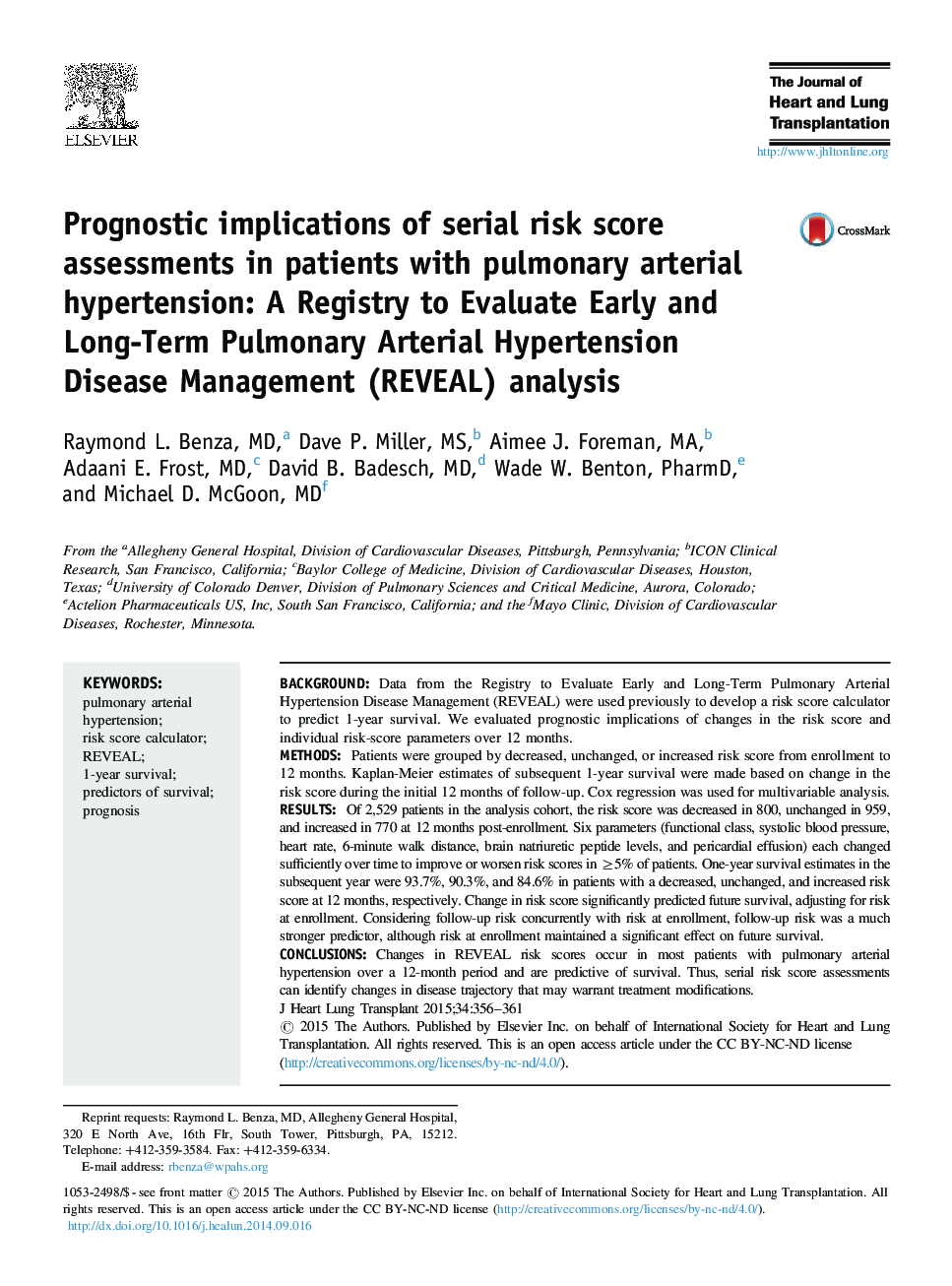| Article ID | Journal | Published Year | Pages | File Type |
|---|---|---|---|---|
| 5987264 | The Journal of Heart and Lung Transplantation | 2015 | 6 Pages |
BackgroundData from the Registry to Evaluate Early and Long-Term Pulmonary Arterial Hypertension Disease Management (REVEAL) were used previously to develop a risk score calculator to predict 1-year survival. We evaluated prognostic implications of changes in the risk score and individual risk-score parameters over 12 months.MethodsPatients were grouped by decreased, unchanged, or increased risk score from enrollment to 12 months. Kaplan-Meier estimates of subsequent 1-year survival were made based on change in the risk score during the initial 12 months of follow-up. Cox regression was used for multivariable analysis.ResultsOf 2,529 patients in the analysis cohort, the risk score was decreased in 800, unchanged in 959, and increased in 770 at 12 months post-enrollment. Six parameters (functional class, systolic blood pressure, heart rate, 6-minute walk distance, brain natriuretic peptide levels, and pericardial effusion) each changed sufficiently over time to improve or worsen risk scores in â¥5% of patients. One-year survival estimates in the subsequent year were 93.7%, 90.3%, and 84.6% in patients with a decreased, unchanged, and increased risk score at 12 months, respectively. Change in risk score significantly predicted future survival, adjusting for risk at enrollment. Considering follow-up risk concurrently with risk at enrollment, follow-up risk was a much stronger predictor, although risk at enrollment maintained a significant effect on future survival.ConclusionsChanges in REVEAL risk scores occur in most patients with pulmonary arterial hypertension over a 12-month period and are predictive of survival. Thus, serial risk score assessments can identify changes in disease trajectory that may warrant treatment modifications.
